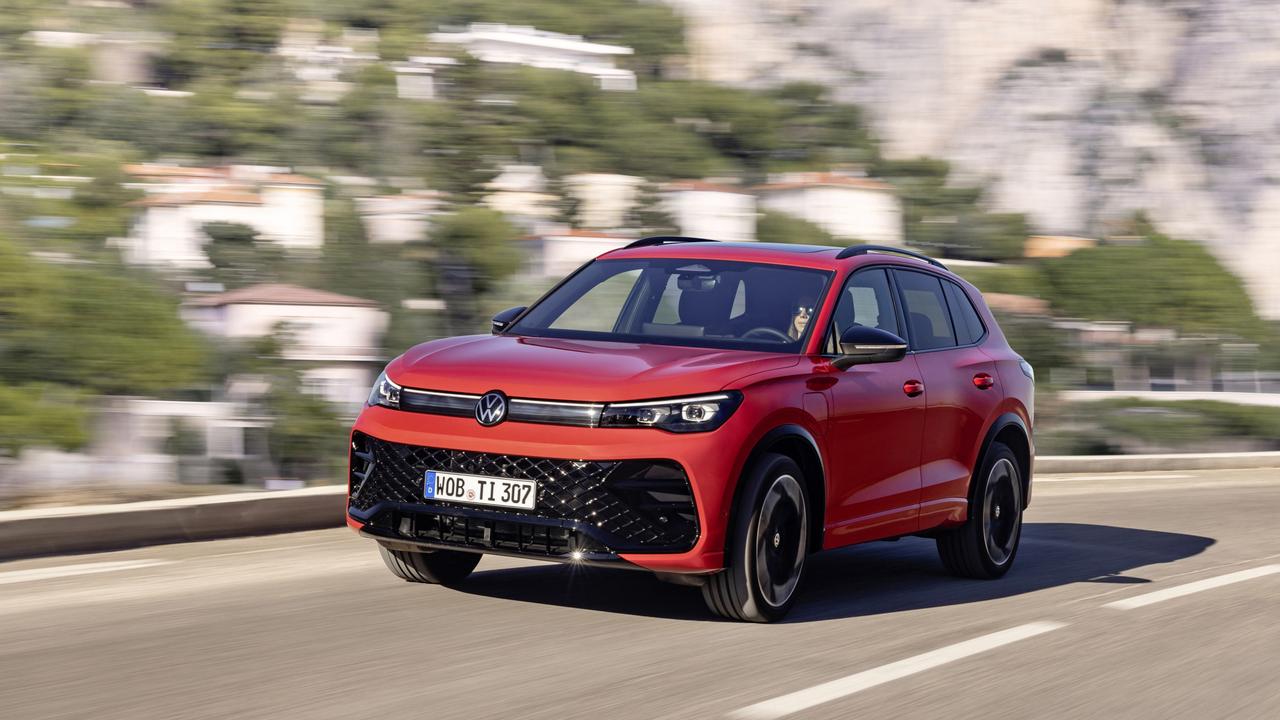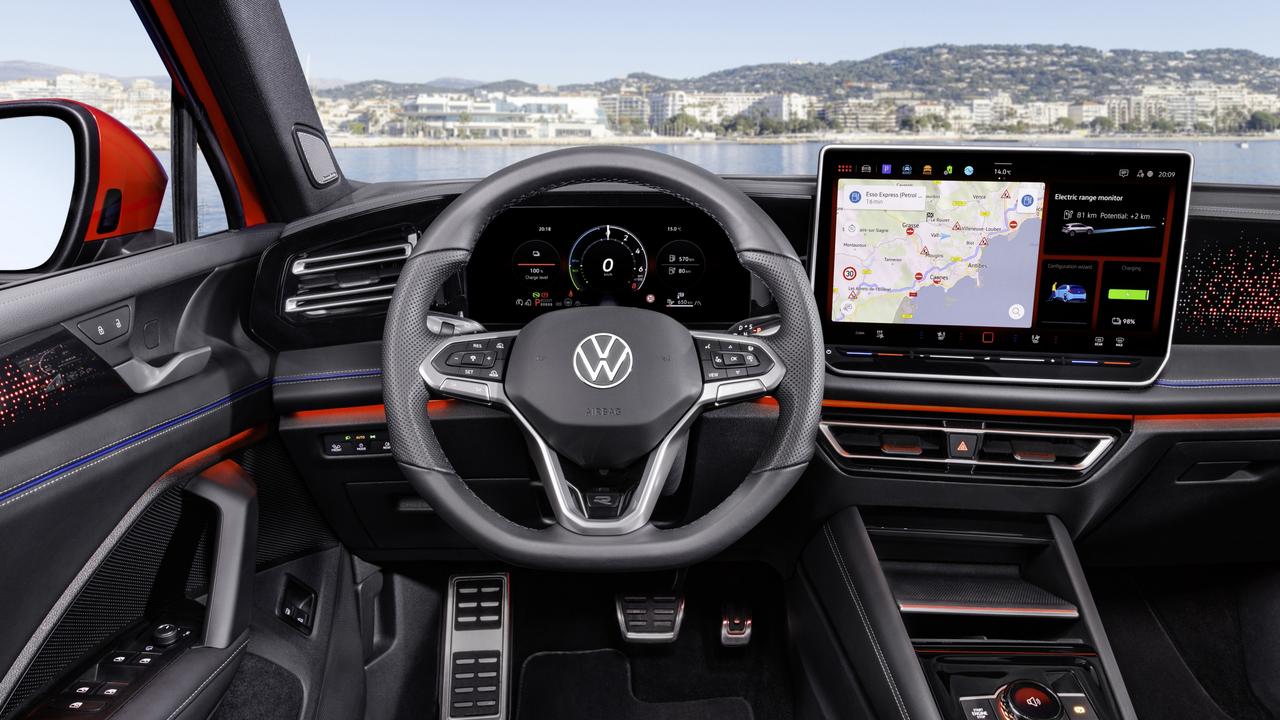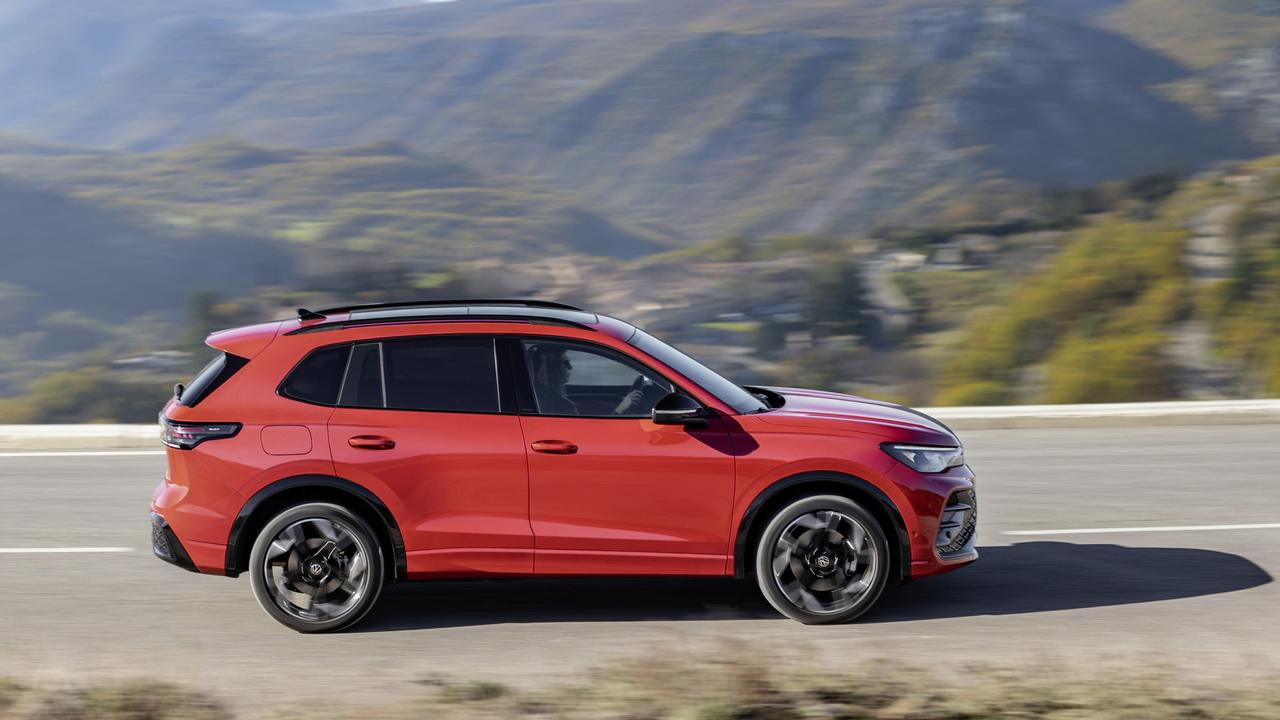2025 Volkswagen Tiguan review
This high-tech machine could challenge Toyota’s RAV4 Hybrid and the Tesla Model Y in the battle for Aussie drivers.
The new Volkswagen Tiguan looks nothing like the last one.
But under the vastly different looking exterior, there are some carry-over traits that family SUV buyers will love.
As long as you don’t go thinking you’re going to see a cut-price stripped-out example of the Tiguan to compete with the Chinese SUVs when it arrives in the second quarter of 2025.

The German brand has stated that its customers don’t want basic base models, and that means all grades of the new range will be better-equipped than ever.
More expensive, too.
Exact pricing and specs are still to be confirmed, but with the current range starting at $43,990 plus on-roads for a spec-deprived front-wheel-drive version, you could surmise that the new line-up might commence closer to $50,000.
You can bank on the base model continuing on with a 110kW 1.4-litre turbo-petrol with front-wheel drive, while a mid-range version will likely have a more powerful 2.0L turbo-petrol with 150kW and all-wheel drive.
The top-end version is a 195kW 2.0L turbo, just like in the Mk8.5 Golf GTI, but with extra torque and AWD, too.
All will use DSG dual-clutch auto gearboxes.
There’s also a plug-in hybrid (PHEV) model which could be a shot for Australia, but maybe not till the end of 2025.
That model has a turbo-petrol engine and a sizeable 19.7kWh battery pack that allows it up to 120km of EV driving – arguably enough for most peoples’ needs when doing the commute to and from work.
And you can recharge it at home on AC, or on the road using DC fast charging.

On test in Germany for this preview drive was a version of the high-spec R-Line grade.
It showed the R-Line will have features like 20-inch alloy wheels, matrix LED headlights that can blank out other road users at night, an enormous panoramic glass roof, proximity unlocking and leather-trimmed seats, including front seat heating, cooling and massage functions.
With a more up-market-looking interior than its predecessor, which arguably prioritised function over form, the new cabin treatment in the Tiguan is a profound step up. Not only because it gets an available 15-inch touchscreen with ChatGPT integrated into it, but it also has quality materials, soft padded sections where most midsize SUVs don’t, and even some funky stitching and glitzy ambient lights.

Space is ample, with more than enough room for a 182cm adult to sit behind a similarly sized driver – plus the second-row seat can slide and recline to improve the comfort levels for those riding in the rear, or prioritise load capacity. The back seats also have a climate control system and heating for those in the window seats.
Boot capacity is 652 litres – more than the last model – and Aussies will get a space-saver spare, too.
Clearly the goal for this car was to take what existed and make it better, and that includes the way it drives. It really has seen some notable improvements over what was already a quality SUV experience.


The steering was light but trustworthy feeling when pushed, and the ride was never too clunky – even on 20s.
The overall handling was delightful for a family SUV, and more joyful than many in the class.
The 1.5 eTSI mild-hybrid model on test wasn’t representative of any engine we’ll get, but with similar outputs to the Aussie entry-grade engine, it was still refined, torquey and offered a hint of fun, too.
I also drove the ‘maybe one day’ PHEV version, which showcased that VW is on par with the best when it comes to powertrain electrification.
That model was smooth in its transition between EV mode and hybrid driving, and it showcased impressive real-world EV range and efficiency.
After hundreds of kilometres – including depleted-battery driving – the displayed average was 4.8 litres per 100km.





